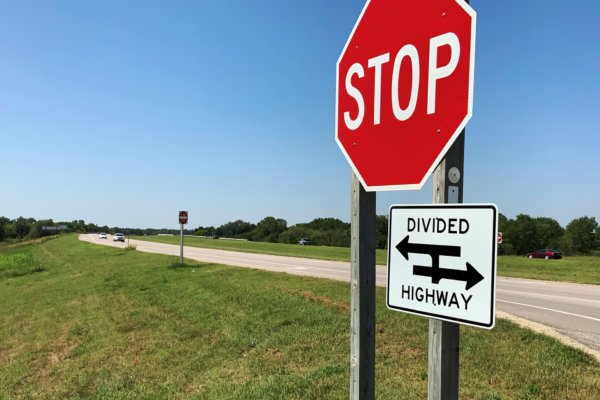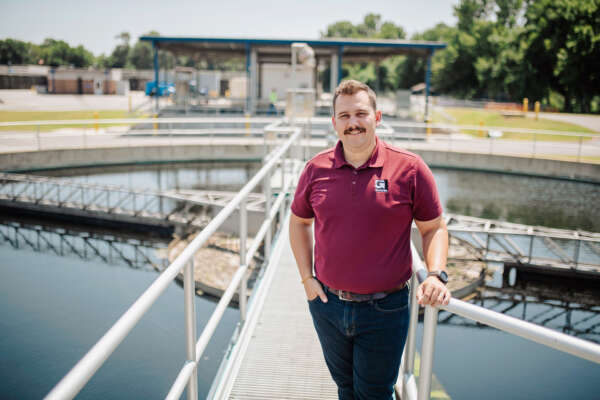How efficient apron design enhances the passenger experience
There's a lot of discussion about how to improve airport passenger experience, whether through architecture, technology, amenities, communication and teamwork among stakeholders, or all of the above. All of these elements are important and make a difference. What else enhances passenger experience and is something our firm pays close attention to? Leading design and overseeing construction of apron improvements.
Apron design is a crucial but often overlooked part of creating a positive passenger experience when taking on a major terminal project. When done well, the apron is barely noticed by those relying on it most. An ideal design can enhance a passenger’s travel experience, while a sub-optimal design can adversely affect it in ways big and small.
The role apron design plays in passenger experience
First and foremost, designing for operational efficiency is key. It’s all about minimizing wait times for passengers during trips, whether that’s waiting to deplane or at the baggage claim area. A good apron design considers the movement of all ground service equipment (GSE) at the gates. How can a bag tug best travel from the bag make-up area to the gate and then from the gate to the baggage claim device? Modelling those movements in design, providing enough space in apron layout, and creating clear pavement markings are essential to making GSE flow smoothly and quickly around the terminal and gates.

"Ultimately, our goal is to ensure that the apron and “back of house” areas of the terminal allow for the most efficient operation of GSE, baggage handling, boarding, and deplaning — all the things you see happening outside of your window seat."
John Carrigan
Aviation Region Leader
Another key aspect that increases efficiency, and therefore makes for a better passenger experience, is design of the apron elevations and gate parking positions. We want to provide parking positions that do not require the passenger boarding bridges (PBBs) to operate at their limits to reach aircraft doors. The more we keep PBBs operating well within their design ranges (extended length, slope, etc.), the less likely gate agents are to experience glitches or limitations when they are docking PBBs to aircraft, mitigating the number of delayed passengers waiting to deplane.
Ultimately, our goal is to ensure that the apron and “back of house” areas of the terminal allow for the most efficient operation of GSE, baggage handling, boarding, and deplaning — all the things you see happening outside of your window seat. The more efficiently those functions operate, the quicker passengers get on and off planes, the quicker they get their bags, and the quicker they get to where they want to go. If we can design the apron to support getting a bag off a plane five minutes faster so a passenger doesn’t miss their cruise ship, they’re going to appreciate that airport for doing so.
Maximizing the use of funding for terminal projects through smart apron design
Funding is an important aspect of a terminal project. Efficient and cost-effective apron design saves the airport money that they can then put toward other terminal elements to improve the passenger experience. So, how can you deliver a quality apron design at the best cost?

"A design-build environment presents a great opportunity to leverage the contractor/engineer relationship by allowing the designer to lean on their build partner to understand how best to construct the apron pavements to drive costs down."
Matt Serynek
Aviation Region Leader
Speed to market when bidding aprons can help keep apron bid prices lower to avoid cost escalation, but focusing on efficient pavement design and constructability has the most potential to save costs. Working with the airport to fully understand the future fleet mix demands allows the design team to develop pavement sections that meet the terminal needs, but don’t break the bank. Careful consideration of constructability can ensure that apron pavements are constructed in a logical manner, minimizing cost due to multiple mobilizations.
A design-build environment presents a great opportunity to leverage the contractor/engineer relationship by allowing the designer to lean on their build partner to understand how best to construct the apron pavements to drive costs down. Saved budget can then be channeled to different aspects of the overall terminal project which have the greatest and most direct impact on a positive passenger experience. It’s also important to build contingency plans into the design and contract documents as much as possible.
Navigating the design-build process for terminal projects
Something that is unique to design-build terminals in the aviation market is how FAA grant funding is associated with the apron portion of the project. The FAA requires the apron portion of a terminal project to be competitively bid, so a design-build delivery platform does not satisfy all the grant requirements. This means the design of the apron executed by the civil firm has to come out of the DB package and be executed in a traditional design-bid-build delivery model. There are numerous challenges associated with this process, considering it will likely require the contractor for the apron to work simultaneously on the same construction site as the design-build team that’s working on the terminal.
This requires the civil firm to constantly make sure that the design package for the apron is fully coordinated with the work being completed by the design-build team. If the design-build team makes changes to the overall terminal project, then the civil team is responsible for addressing and ripple effects and issuing any changes to the apron project. That goes all the way down to construction fencing – who owns the fence and who is responsible for moving the appropriate section of fence each day to allow for that day's work? Navigating this unique aspect of design-build terminal construction goes a long way to delivering the final project on time and on budget, creating a quality experience for the airport.
Creating a simple experience
If the apron design is a success, it’s forgettable - when something is well-designed, you don't even notice it’s there and how easy it is to use. You want the passenger’s experience to be simple every time – passengers get on the plane, get off the plane, and get their bags as quickly as possible. And apron design plays a big a role in this. Garver's terminal apron design experience at large commercial service airports like KCI, BNA, and DFW can help airports have a positive impact on passenger experiences.
Garver has unique design expertise in how gate parking can be optimized for the airlines and the fleet mix intended for the terminal. Our design intent, using some Garver-developed methods, is to provide maximum flexibility in gate parking and minimize limitations that can be caused by adjacent aircraft. We take an in-depth look at the operations the airport expects for the terminal — like the GSE movements and flow to various areas and the surrounding operations, such as fuel farms — and ask how they best flow through our new apron area without impacting aircraft movements or schedules.
The very best apron design is one that’s delivered ahead of schedule, under budget, and is then forgotten about for the life of the terminal.









Share this article